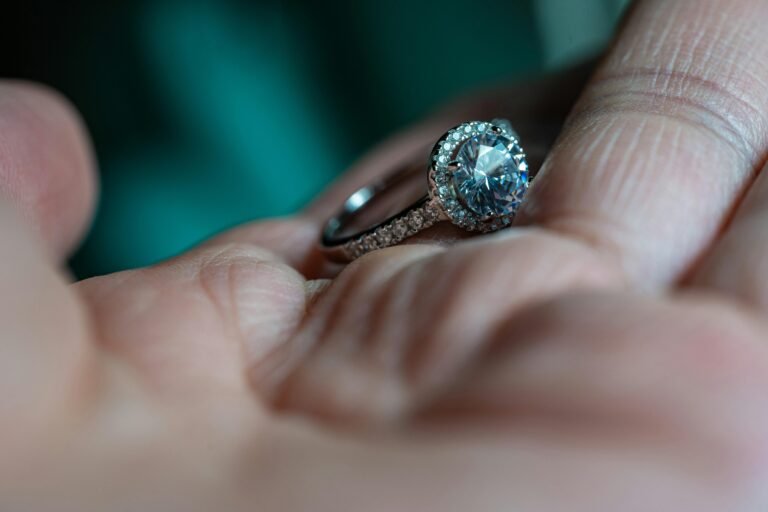Photo by Jimmy Chan:
Diamonds have long been revered as symbols of love, wealth, and elegance. When choosing a diamond, whether for an engagement ring, a pendant, or any other piece of jewelry, one of the most critical aspects to consider is its cut. A diamond’s cut is not only about its shape but also how well it has been crafted to reflect light, which directly impacts its brilliance, fire, and overall value.
This comprehensive guide will explore the various diamond cuts and how each influences the stone’s aesthetic and monetary worth. If you’re looking for a stunning diamond, visiting Diamonds On Richmond’s Auckland store could offer you a firsthand experience of these exquisite cuts.
The Importance of Diamond Cut
Of all the four Cs—cut, colour, clarity, and carat weight—the cut of a diamond is the most important. Although carat weight and clarity are important factors, the cut can either enhance or hinder the beauty of the diamond. A diamond that has been cut in the right manner will allow light to bounce from one facet to the other and then escape through the crown part, creating a beautiful sparkle.
The cut of a diamond is measured on a scale ranging from Excellent to Poor by the Gemological Institute of America (GIA). This grading considers the size and shape of the diamond, the arrangement of facets, and the finished work of the cutting. An “Excellent” cut will yield the highest brilliance, and An “Poor” cut will look like it lacks life, even if it has a high clarity and no color taint. The better the cut, the higher the value of the diamond since it improves the appearance of the stone.
Understanding Diamond Cuts
Diamonds are available in different cuts, each with unique features that make them attractive to other people and affect their price. Here are some of the most popular cuts of diamonds and why they stand out.
Princess Cut
The Princess cut is a new, square-shaped diamond with 76 facets to give it that extra brilliance. This is the second most preferred cut of diamonds due to its modern appearance and good luster. Compared to other cut styles, the princess cut’s corners have not been blunted, making it ideal for solitaire engagement rings. Though it is not as bright as the round brilliant cut, the princess cut is appreciated for combining a square shape and clever cutting. This cut is cheaper than the round brilliant cut and is preferred by many people who want to combine beauty with the cost of the product.
Emerald Cut
The emerald cut is a rectangular step cut with an extensive and open table. Whereas the brilliant reductions are designed to bring out the fire and scintillation of the diamond, the emerald cut draws attention to the clarity of the stone and its color. This cut forms what is known as a ‘hall of mirrors,’ where the light bounces off the elongated flat planes, thus resulting in a less overbearing but rather elegant shimmering.
For instance, the emerald cut is widely preferred by those who are into retro or Art Deco style. Due to the large table, this cut is recommended on diamonds with higher clarity grades, as it is easier to reveal inclusions. The emerald cut is cheaper than the round or princess cut but gives the diamond a different look that is more classic for people who do not want to use the conventional shape.
Cushion Cut
The cushion cut, also known as the pillow cut, is characterized by a square or rectangular form with rounded corners and larger facets than the brilliant cut. This cut is a blend of the round cut and the unique shape of the princess cut, giving it a tender and feminine appearance. The cushion cut is quite antique, looking like the diamonds used in the 19th century.
It is known for fire, or how light scatters and divides into a multicolored spectrum. Compared to the round or princess cut, the cushion cut could be more brilliant, but it does offer a good combination of tradition and trendiness. It also costs less than newer diamond cuts, and it is preferred by those who seek a unique diamond with a story behind it.
Marquise-Cut
Marquise cut is oval with tapering edges, and the idea behind it is to have as much carat as possible visible. The French King Louis XIV ordered this cut to look like the smile of the Marquise de Pompadour. The marquise cut is recommended for people who want a ring that will make their diamond recognizable because the cut looks very elegant and, at the same time, original. Due to its size, it has the effect of elongating and slimming the finger of the wearer. However, the marquise cut must be well set to avoid its sharp edges chipping off. It is less popular than the round or princess cut, but its dramatic and royal look attracts many individuals who are keen on such cuts.
Conclusion
Diamond cut is a crucial aspect of the diamond because it affects the appearance of the stone and its price. Every cut has its distinct characteristics, from the incredible sparkle of the round brilliant cut to the classic look of the cushion cut. Knowledge of these differences is crucial in choosing a diamond that will fit your personality budget and expectations for quality. Whether it is the timeless glitter of a round diamond cut or the sophisticated cut of an emerald stone, the right choice will gleam for the rest of your life.

Daniel J. Morgan is the founder of Invidiata Magazine, a premier publication showcasing luxury living, arts, and culture. With a passion for excellence, Daniel has established the magazine as a beacon of sophistication and refinement, captivating discerning audiences worldwide.





